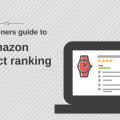
This massive and ongoing growth has created unprecedented opportunities for retailers the world over. While major brand names are certainly cashing in on the sector, smaller-scale entrepreneurs can easily follow suit. From the single commerce service responsible for kickstarting the online shopping revolution, dozens of marketplaces have emerged; of course, not all of them are right for all retailers.
Benefits of Online Marketplaces
Whether you have little desire or capital for starting your own online store or just want to greatly expand your visibility, online marketplaces are the solution. They offer a number of advantages for budding retail entrepreneurs such as:
- Handling Delivery: For home-based sellers and retailers just starting out, packaging and shipping can be a costly stress factor. Marketplaces cover all the finer points for you, so you can concentrate on furthering your product lines.
- Broader Reach: Online marketplaces have virtually unlimited customer bases already looking for the types of products you have to offer. Building a clientele of this magnitude is almost impossible for smaller retailers, and those who do manage to obtain significant visibility often take years to reach that point.
- Fewer Expenses: From shipping costs to marketing, all the necessities of the retail sector tend to add up quickly. If you have yet to establish a sizable client base, chances are your sales can’t live up to those financial expectations. Marketplaces don’t offer their benefits for free, but they’re typically more affordable than the alternatives.
These are only a few of the benefits at your disposal when you sell your wares through an already-established marketplace. Having said that, in order to spin those advantages in your favor, you need to choose one suited to your specific needs. This takes a good bit of research.
Choosing the Best Online Marketplace for Your Products
Finding the right marketplace means taking a few key factors into consideration. First of all, think of the types of products you sell. Secondly, take into account each marketplace’s features, services and prices. Also delve into their potential reach in terms of your target audience. Take a look at some of the ecommerce industry’s biggest names.
Amazon

Amazon could also be considered a catch-all as far as products are concerned, selling everything from cosmetics and apparel to electronics and portable hot tubs. With more than 30 product categories, almost anything you sell would have a place here and a continual influx of potential buyers.
The Prices and Plunders of Prominence
Fees imposed by Amazon depend on the number of products you intend to sell each month and their categories. For 40 or less, you’ll pay $0.99 per item as well as a referral fee falling somewhere between six and 45 percent based on the product category. The expenditures give you access to Fulfillment by Amazon, which covers product storage, customer service and logistics for everything you sell.
If you sell more than 40 items each month through Amazon, you’ll need to pay a flat $39.99 service subscription fee along with the famed shopping portal’s category-based referral fees. Your subscription enrolls you in the Fulfillment by Amazon service and grants you access to buyers throughout North America as well as extra visibility through priority placement on product details pages. At the same time, you’ll have the freedom to extend promotional offers, gift wrapping and customized shipping rates to buyers.
Amazon’s Ups and Downs
Reach, visibility, flexibility, features and relatively low fees are all major selling points for placing your products on Amazon. Customer reviews are also likely to pour in, so valuable word-of-mouth advertising could work in your favor. If you’d prefer to fulfill orders on your own rather than have Amazon do it, you have this option as well.
Still, there’s a significant drawback: competition. Countless other retailers are also vying for customers’ attention on this marketplace. You’ll have to be able to offer competitive pricing and quality if you want to beat opponents at their own game.
eBay

While you can technically make a decent profit off a wide range of products on this global auction platform, some items prove more lucrative than others for retailers who operate on smaller scales. Rare and vintage items fall into this category. Some experts also recommend high-dollar items as order processing fees for smaller ones have a way of overshadowing profit margins.
Though a considerable number of buyers look specifically for branded items, finding unique selling points for unbranded alternatives has also been known to pay off in the long run. Overall, standing out in the crowd is the key to success through eBay.
What You’ll Pay for a Spot on eBay
Sellers are charged 10 percent of each sale regardless of item type or volume with a $750 cap on this basic fee. Without a subscription, you’re allowed to list up to 50 items for free with a $0.30 fee for items over that limit. Store subscription are available in three tiers: Basic, Premium and Anchor. Free listing limits and subscription prices grow higher at each level while inclusion fees drop.
eBay Store Features
Though you don’t necessarily have to subscribe to eBay to be able to sell your goods there, subscriptions come with numerous benefits. Basic store membership alone takes your free listing opportunities from 50 to 250 items per month at a cost of around $240 per year. This can be paid on a monthly basis, but the price is slightly higher when you choose this route.
If you want to target sellers in other countries, subscribing takes the hassles of international shipping and customs forms off your shoulders via eBay’s Global Shipping Program. You’ll also be able to create your own eBay store with numerous customization options. Those looking for the advantages of marketplace visibility as well as the benefits of personal branding would be well served by this option.
Pitfalls of Selling on eBay
Once again, the drawback here would be high levels of competition. More than 25 million active sellers pander their wares on eBay according to the company’s latest reports. These range from small-scale newcomers to top names in the retail sector. Uniqueness, lower prices than the competition and consistent quality will be your tickets to success on this platform.
Etsy

Listing Prices
Etsy imposes a $0.20 listing fee per item and a transaction fee of 3.75 percent of the sale price. A three percent payment processing fee plus $0.25 for each item sold is also involved. These prices apply to all sellers whether listing a single item or hundreds of them each month. Shipping falls on your shoulders.
Benefits and Disadvantages
Since Etsy caters to buyers looking for handmade items, you’ll get a nice flow of targeted prospects. Your products are likely to fall into a class all their own, too. While shipping costs come out of your pocket, the company does offer a wide range of resources for its sellers, such as free printable shipping labels, discounted shipping, complimentary merchant apps and promotional tools to name a few.
On the downside, many Etsy shop owners are facing tough competition. It seems some retailers pass off mass-produced items as handmade for much cheaper rates than true crafters are able to offer. While the company does offer a certain level of marketing for its sellers, achieving further visibility is largely left up to individual merchants.
Bonanza
With online shopping making an endless array of items more accessible to almost everyone, the quest for truly uncommon finds has gained steam. Bonanza is an online marketplaces catering to this uptick. Should your products fall into the categories of fashion, home décor or artistic pieces, this may be the marketplace to help you shine. Bonanza’s following consists of more than two million visitors each month, and that number continues to grow. Sellers aren’t subjected to listing fees for their items, but a 3.5 percent closing fee for sales of $500 or less is in place. Those exceeding this amount are charged $17.50 per sale and 1.5 percent of the total amount over $500.
Pros and Cons
Honing in on off-the-beaten-path products takes some of the competition out of the equation when you sell through Bonanza. Several tools are available for the company’s sellers to help with everything from online shop customization to visibility.
Though the company has a sizable clientele, it doesn’t yet boast the same reach as eBay or Amazon. Since its merchant list doesn’t measure up to that of more extensive sites either, smaller size may not be a bad thing. Its distinctive category lineup may restrict your product offerings to a certain extent.
Several other online marketplaces are out there, waiting to help you sell products and find your own level of fame. Wish and Newegg focus primarily on tech gadgets and accessories whereas Wayfair centers on home furnishings.
Bottom Line
Consider the types of products you’ll be offering when choosing an online marketplace; then, look into each one’s traffic, competition levels and available features. Do the math to be sure you can sell your products at a low enough price to appeal to customers while still covering the costs involved. Once you do a deep dive into the available options, you’re sure to find one suited to your needs.













